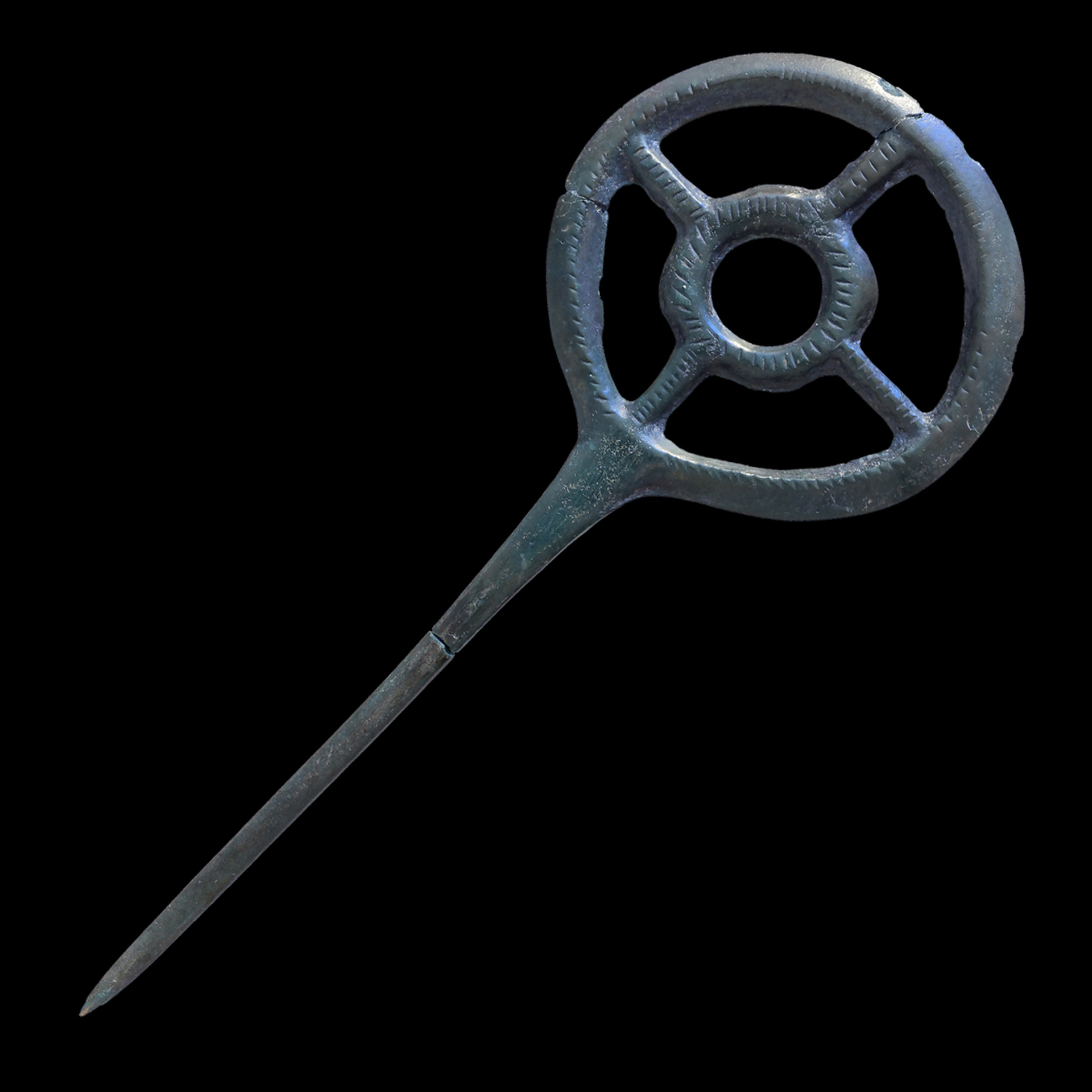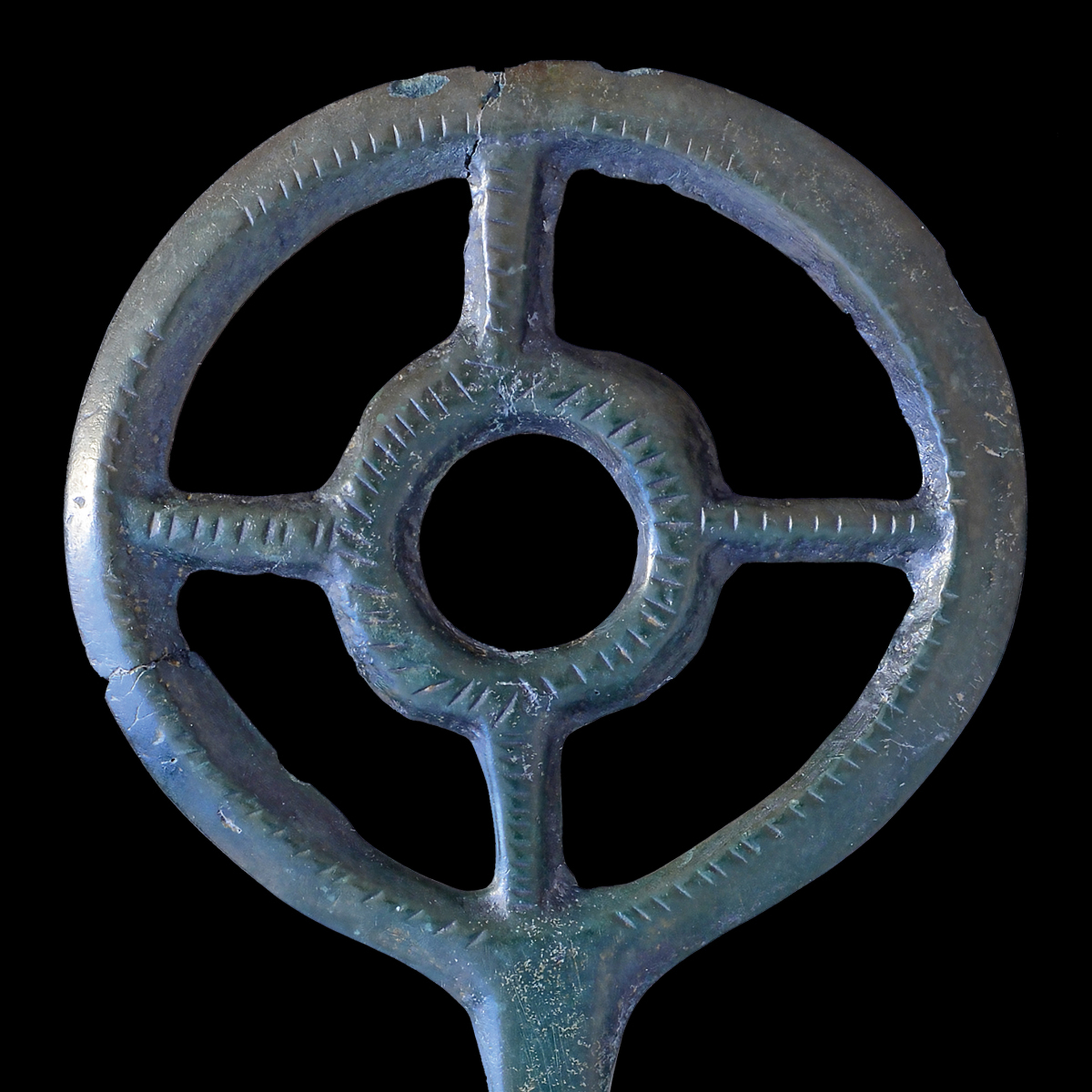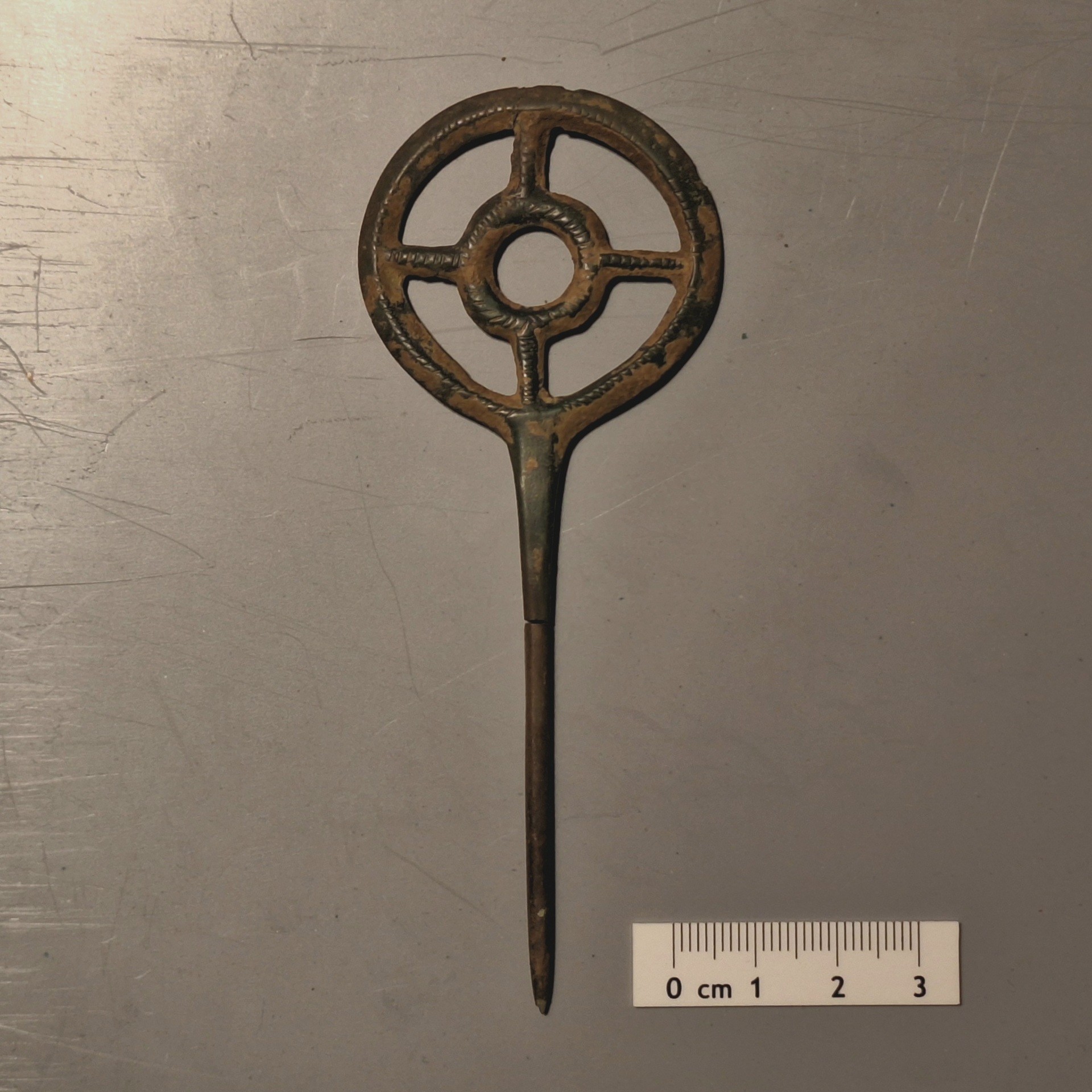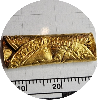Category:
Dating:
Description:
It is a double-wheel needle with a profile on both sides in spoke pattern E, where the spokes do not cross but meet in an inner ring. The needle has a round head and a narrow rim, and it has notched decoration on both sides. The shaft appears a little short and may have been reworked at a break point. The lack of an eyelet or crown is noticeable. An almost identical, but undecorated, comparable piece comes from Katlenburg-Duhme. The oldest double-wheel needles appear as a further development of the simple wheel needles as early as the middle Barrow Bronze Age (stage BzC1), but are mainly characteristic of the younger Barrow Bronze Age (stage BzC2) and thus belong to the 14th century BC. The Leinebergland in southern Lower Saxony, which yielded relatively few finds during the Middle Bronze Age, is located between two very rich traditional costume areas: the Fulda-Werra group in eastern Hesse, southern Thuringia and northern Franconia, and the Lüneburg group in northeastern Lower Saxony. In addition to the long-recognized importance as a connecting corridor between these two areas, an independent cultural character, perhaps even a regional group, is now emerging along the middle reaches of the Leine. The double-wheel needles in southern Lower Saxony also appear to be somewhat older in fine chronology than those of the Lüneburg group with spoke pattern E and profiled rim.
Literature:
Vergleichsfund: Laux (1976) Nr. 77 (Katlenburg, Grabhügelfund)
Material:
Bronze
Weight:
15,6 g
Length:
115,0 mm
Condition:
Completely preserved
Detector:
XP Deus
Country:
Germany
County:
Northeim
Front / Professionally restored
Rear / Professionally restored
Cleaned with water & brush
Social Media & E-mail
Copy and share link:
Related finds
Copper, Unknown
Silver
9th century BC
Bronze
Brass
51 - 54 (Quest Q30)
Bronze
Copper, Iron
16th century AD







